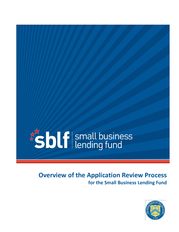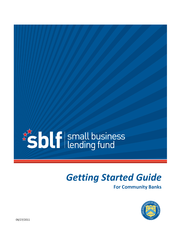The Capital Assistance Program And Its Role In The Financial Stability Plan
U.S. Department of the Treasury
Description
future losses under each of the scenarios. The BHCs will also forecast internal resources
available to absorb losses, including pre-provision net revenue and reserves. The BHCs
will report their estimates using a standardized template provided by the agencies, and
will provide firm-level information to support their estimates.
An important part of the process is that the agencies will meet with each financial
institution to review their loss and revenue forecasts. Based on those discussions, the
agencies will determine the amount of a regulatory capital necessary for each institution
to hold today in order to remain well-capitalized under the more adverse scenario as
capital is drawn down.
BHCs will be given a six month period to raise any additional capital needed to
establish this buffer from private sources.
BHCs can apply to the CAP immediately at the conclusion of the assessment exercise to provide certainty of access to the program, but delay funding for six months in order to have the opportunity to raise as much private capital as possible. BHCs that have undergone this forward-looking capital test will have access to Treasury capital in the form of mandatory convertible preferred shares. These shares can convert at the firm’s discretion (with the approval of their regulator) into common equity if needed to preserve lending in worse-than-expected economic environment at a conversion price set at a 10% discount from the prevailing level of the institution’s stock price as of February 9, 2009. A program that emphasizes the forward-looking nature of the capital planning process and pre-positions an additional capital buffer has important advantages relative to capital provided only on a when-needed basis.
Market participants will gain confidence from the major U.S. banking organizations having undergone a systematic disciplined exercise designed to prepare them for a more severe and protracted recession than is currently generally expected to occur. A capital buffer today may be especially valuable given the uncertainty about the economic outlook and about whether capital would be available as needed if an unexpectedly adverse scenario unfolds. A capital buffer also reduces the risk that problems at a very small number of counterparties, through the many linkages across institutions, lead to the failure of otherwise viable institutions.
While some firms may be asked to hold more capital than they might otherwise, the beneficial effects on confidence in the stability of the financial system and the creditworthiness of borrowers should lead to more lending, not less. By reassuring investors, creditors, and counterparties of financial institutions—as well as the institutions themselves—that there is a sufficient amount and quality of capital to withstand even a considerably weaker-than-expected economic environment-the Capital Assistance Program should improve confidence and increase the willingness of financial institutions to lend. This increase in lending, in turn, will help to stimulate economic activity and restore to U.S. economy to a path of robust economic growth. 4 .
BHCs can apply to the CAP immediately at the conclusion of the assessment exercise to provide certainty of access to the program, but delay funding for six months in order to have the opportunity to raise as much private capital as possible. BHCs that have undergone this forward-looking capital test will have access to Treasury capital in the form of mandatory convertible preferred shares. These shares can convert at the firm’s discretion (with the approval of their regulator) into common equity if needed to preserve lending in worse-than-expected economic environment at a conversion price set at a 10% discount from the prevailing level of the institution’s stock price as of February 9, 2009. A program that emphasizes the forward-looking nature of the capital planning process and pre-positions an additional capital buffer has important advantages relative to capital provided only on a when-needed basis.
Market participants will gain confidence from the major U.S. banking organizations having undergone a systematic disciplined exercise designed to prepare them for a more severe and protracted recession than is currently generally expected to occur. A capital buffer today may be especially valuable given the uncertainty about the economic outlook and about whether capital would be available as needed if an unexpectedly adverse scenario unfolds. A capital buffer also reduces the risk that problems at a very small number of counterparties, through the many linkages across institutions, lead to the failure of otherwise viable institutions.
While some firms may be asked to hold more capital than they might otherwise, the beneficial effects on confidence in the stability of the financial system and the creditworthiness of borrowers should lead to more lending, not less. By reassuring investors, creditors, and counterparties of financial institutions—as well as the institutions themselves—that there is a sufficient amount and quality of capital to withstand even a considerably weaker-than-expected economic environment-the Capital Assistance Program should improve confidence and increase the willingness of financial institutions to lend. This increase in lending, in turn, will help to stimulate economic activity and restore to U.S. economy to a path of robust economic growth. 4 .
Economic Conditions Sub Categories
U.S. Department of the Treasury













